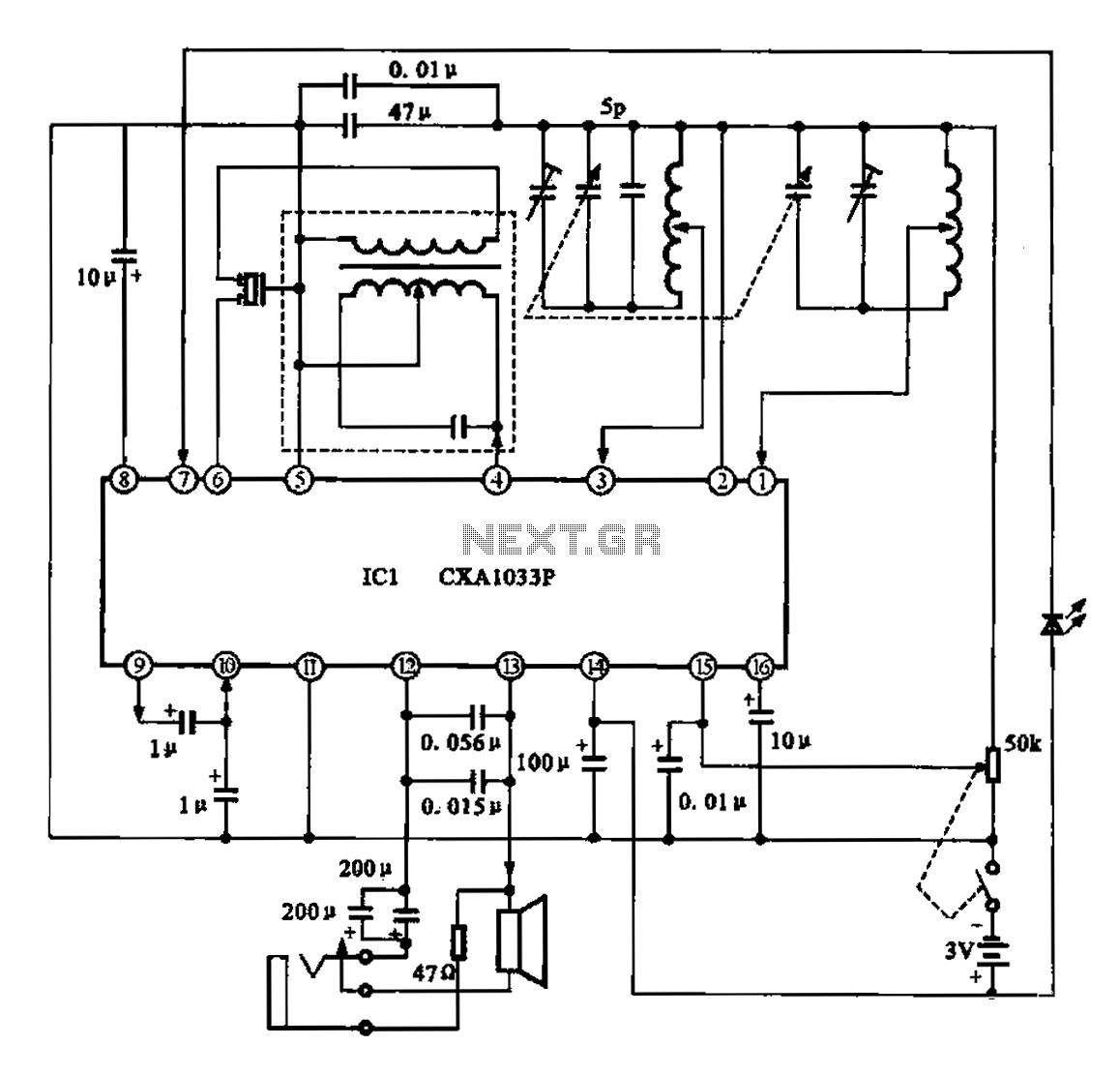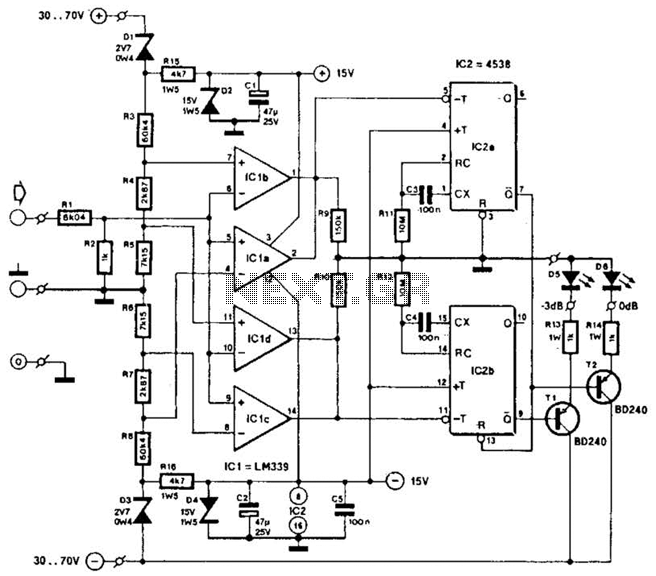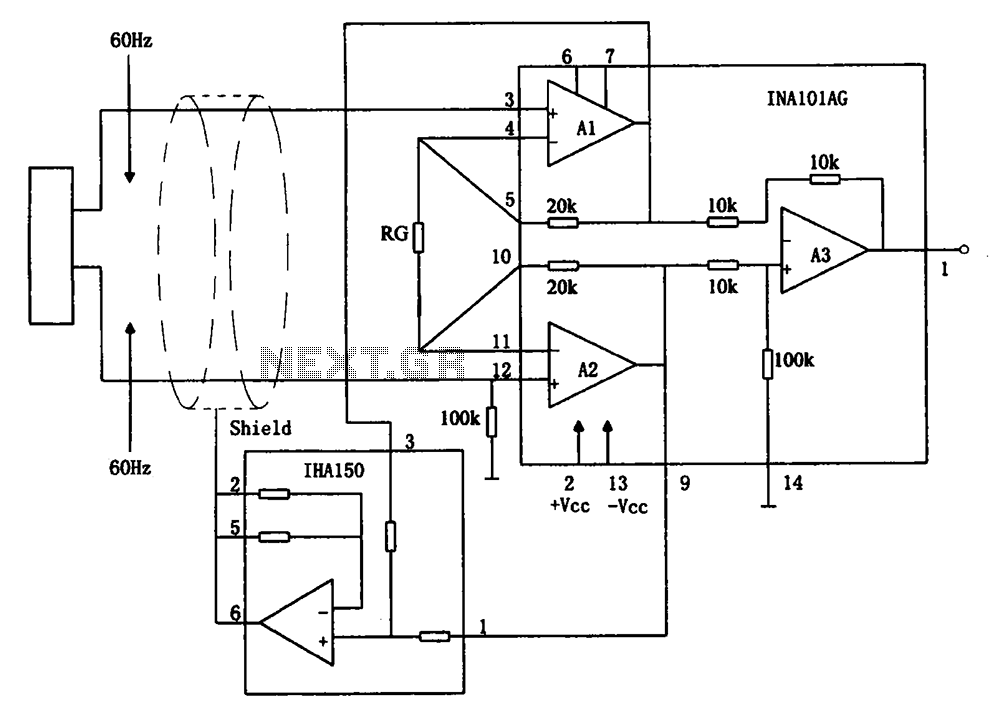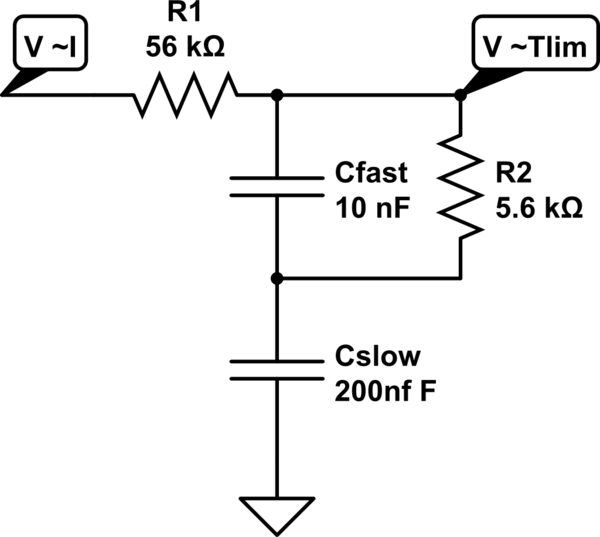
AM radio circuit chip

The AM radio features a monolithic circuit design. The broadcast signal is received by an antenna, which feeds into a high-efficiency mixer. The output from the intermediate frequency (IF) transformer undergoes filtering before being sent to the IC1. The signal is then amplified by the detector in IC1, resulting in a 13-pin output audio signal.
The described AM radio circuit operates by utilizing a monolithic design that integrates multiple functions into a single chip, enhancing performance and reducing size. The antenna captures the AM broadcast signals, which are then directed to a high-efficiency mixer. This mixer plays a crucial role in converting the incoming radio frequency signals to a lower intermediate frequency, which is easier to process.
The output from the mixer is fed into an IF transformer, which serves to filter out unwanted frequencies and isolate the desired signal. This filtering process is vital for ensuring that only the relevant audio information is passed on to the next stage of the circuit. After filtering, the signal is directed to IC1, where it is further processed.
In IC1, the signal undergoes amplification through a detector circuit. This amplification is necessary to boost the audio signal to a level suitable for output. The output is provided at a 13-pin configuration, which allows for connection to additional audio processing components or directly to a speaker system, enabling the listener to hear the broadcasted audio clearly.
This circuit design is efficient and compact, making it suitable for various applications, including portable radios and integrated audio systems. The use of a monolithic approach not only simplifies the design but also enhances reliability and reduces manufacturing costs.AM radio shows monolithic circuit. The broadcast signal received by the antenna foot iciCD fed by a high efficiency mixer, the output from IF, IF transformer after filtering, a nd then into the feet IC1, after amplification by the detector in ICI, 13-pin output audio signal .
The described AM radio circuit operates by utilizing a monolithic design that integrates multiple functions into a single chip, enhancing performance and reducing size. The antenna captures the AM broadcast signals, which are then directed to a high-efficiency mixer. This mixer plays a crucial role in converting the incoming radio frequency signals to a lower intermediate frequency, which is easier to process.
The output from the mixer is fed into an IF transformer, which serves to filter out unwanted frequencies and isolate the desired signal. This filtering process is vital for ensuring that only the relevant audio information is passed on to the next stage of the circuit. After filtering, the signal is directed to IC1, where it is further processed.
In IC1, the signal undergoes amplification through a detector circuit. This amplification is necessary to boost the audio signal to a level suitable for output. The output is provided at a 13-pin configuration, which allows for connection to additional audio processing components or directly to a speaker system, enabling the listener to hear the broadcasted audio clearly.
This circuit design is efficient and compact, making it suitable for various applications, including portable radios and integrated audio systems. The use of a monolithic approach not only simplifies the design but also enhances reliability and reduces manufacturing costs.AM radio shows monolithic circuit. The broadcast signal received by the antenna foot iciCD fed by a high efficiency mixer, the output from IF, IF transformer after filtering, a nd then into the feet IC1, after amplification by the detector in ICI, 13-pin output audio signal .





